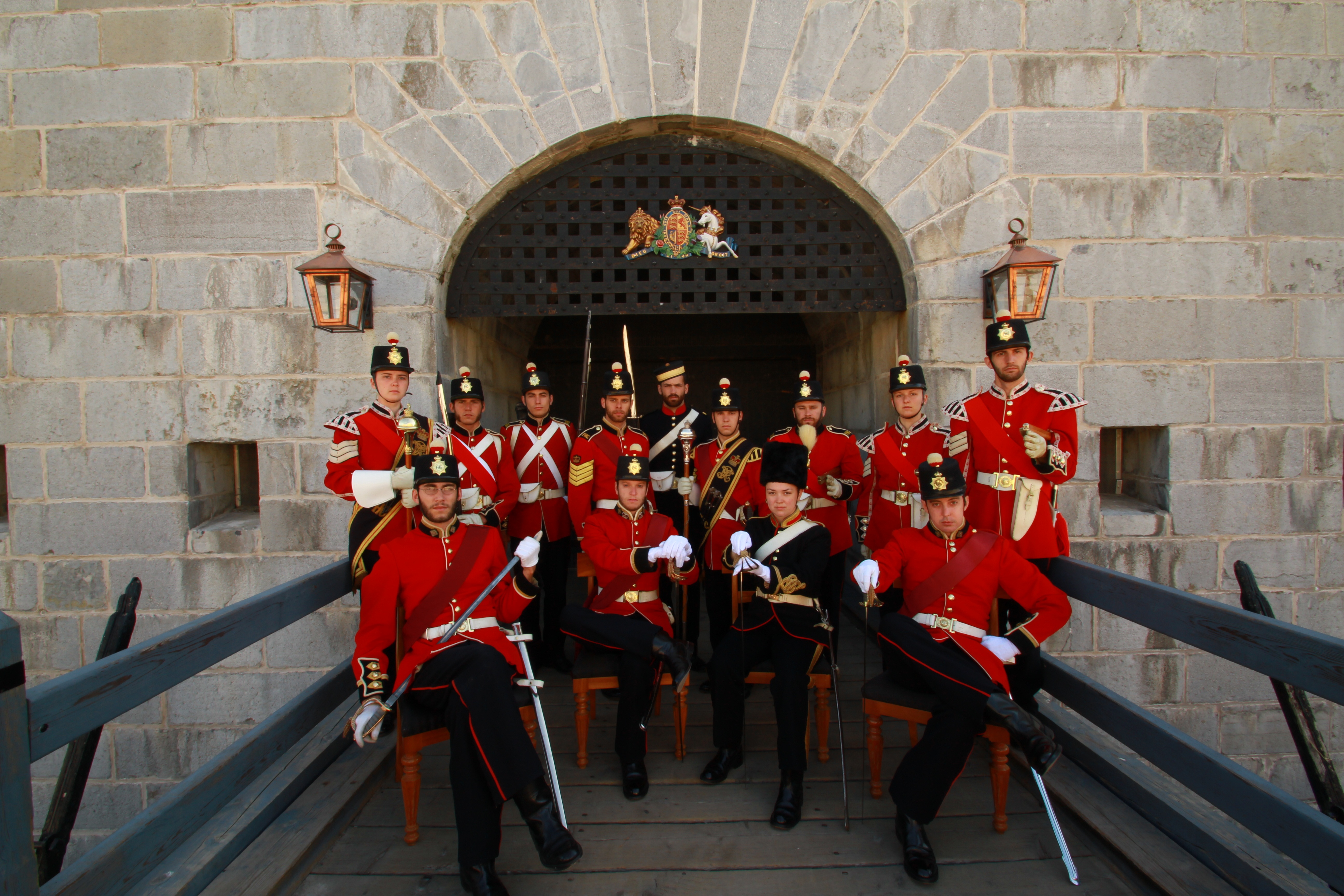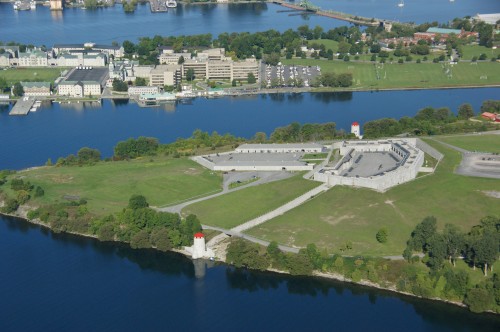

Thanks to Sean J. McNeill for providing this picture of the guard at Fort Henry in Kingston, Ontario, Canada.
Established on the shore of Lake Ontario during the war 1812 to defend Upper Canada from American invasion, the small harbour outpost was expanded into a formidable stone fortress in the decades following the conflict. Until 1870, Fort Henry was garrisoned by British troops, after which point it was turned over to the army of the newly independent Dominion of Canada.
As relations between Ottawa and Washington improved in the late 19th Century, Fort Henry became obsolete, although it was briefly used to house enemy POWs during the First World War, a function it would reprise between 1939 and 1945. In the post war period, Fort Henry was designated a national historic site and remains so to this day.
WE WANT YOUR LIVING HISTORY PHOTOS TOO!
If you have any photos or Youtube videos of historic re-enactors, museum staff in period uniforms, vintage vehicles, aircraft or ships, please send them to us at militaryhistorynow@gmail.com with the subject header: Living History. Along with the email, provide details on what’s happening, when and where.











Thanks so much for this. Years ago I used to work in Detroit, and loved taking my kids across into Canada for history trips. Fort Henry was a favorite stop. You brought it all back.
Thanks for writing. Glad you liked it. Have you ever been to the forts along the Niagara?
Yes indeed. Niagara being a tolerable (even with little kids enquiring “Are we there yet?”) one-day drive from Detroit, and offering varied attractions, it was for some years a favorite destination. We would stay in one of the old hotels in Niagara-on-the-Lake – a much nicer atmosphere than the gimcrack thrills of Niagara Falls city – so Fort George and the blockhouse of Fort Mississauga were within walking distance. Fort Niagara lay just across the river on the American shore. Queenstown Heights, with Brock’s Monument, was en route to Niagara Falls; and Fort Erie a little way beyond. All had become battlefields during American attacks and British-Canadian counterattacks, so all were on our visit lists. A lot of military history packed into a compact border area.
Yup… I know them all very well. I go down there at least once a year myself.
Thanks for posting the photos! I was Colour Serjeant last year, but have moved on to new work since then. I live in Cornwall now and am looking forward to visiting Fort Wellington and Upper Canada Village this summer. When you spend all summer working at a historic site, you miss out on all the other great ones!
– Sean McNeill
Thanks for sending them, Sean! if you take any others this summer, send them along.
I’ll look into compiling a couple good action shots from one of the summer shows. This year marks the 75th Anniversary of the guard. Although it was a POW camp in WWII, the museum & reenacting unit was actually founded August 1, 1938. Following the declaration of war, the museum was emptied and converted to a prison. In fact, there is a story recorded that prisoners of the Kriegsmarine who were tasked with moving museum pieces stole for themselves a layout of the Fort and used it in an escape. All prisoners were returned to the camp…legend is that some simply went window shopping in Kingston.
Amazing. Reminds me of the film 49th Parallel… without the window shopping.
Fort Henry is a great museum, but the FH Guard is a rather shabbily treated entity. The average soldier there is probably treated with less respect than a soldier currently serving in the actual military. How like the leadership at the Fort Henry guard to give you a photo that features their leadership. This is a great example of the self-entitlement that is institutionalized in their management. Few tourists have any idea of the kind of mental abuse that is ingrained in their training program.
James S. Finan PhD LSE ’75, Professor Emeritus RMC, FHG 604. I served in The Guard from 1964 to 1968 inclusive. In my last year I was Drum Major. For me and many others in my time, The Guard was a great experience. Training & performances were physically demanding but generally that was energetically embraced. The training made us very good at what we did & we revelled in that. Armstrong Gun races were actually run races in my time. We (the Drums Team) won in two successive years & were 2nd a third year. There were undoubtedly those in my era who were repelled by The Guard but they were few & far between & I personally knew none of them. Regrettably, almost all of my FHG pals are now deceased. “We met on the level & parted on The Square.”